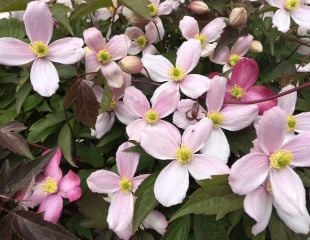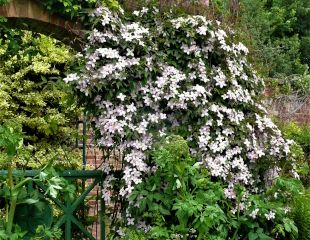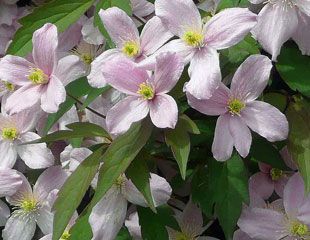


When and how to prune Clematis Montana
There are two ways to prune Clematis montana, a routine light prune or a renovative hard prune. Whatever type of pruning you do, always prune after flowering which will be around June, depending on where in the country you are gardening.
Clematis montana is one of the most popular Clematis. It is easy to grow and, unlike many other clematis, it has no complicated pruning requirements. So, being clear, you do not have to prune Clematis montana routinely, as it will grow happily and flower without annual pruning, unlike the summer flowering Clematis (Groups 2 & 3).
However, you can if it suits your garden and space, give it a light prune. Just trim it back to the space required.
Clematis montana is one of the most vigorous of the Clematis family. You can leave Clematis montana to grow on their own for years, but after a while, they can become large and unruly. This is a renovative prune which should be after flowering. Prune it back hard, if necessary, to reshape and resize. It is important to prune it straight after flowering to ensure you do not interrupt the flowering cycle. C. montana responds well to pruning, cut back all shoots which are too long, and untangle it by pruning. Equally, if you are short of time, you can cut it back wholesale with garden sheers and it will be fine. Clematis montana is tough. If the Clematis has become a tangled mess and is not flowering at its best, you sometimes need to perform a hard prune.
Clematis montana flower on old wood, which simply means that it grows stems this year on which next years flowers form. If you prune too late in the year, you will cut off next year's potential flowers.
I particularly like Clematis montana 'Elizabeth' (illustrated above right) with soft creamy pink flowers which are almond scented. Available from Thompson and Morgan ( affiliate link)
More information about Clematis, one of our favourite climbing plants.
